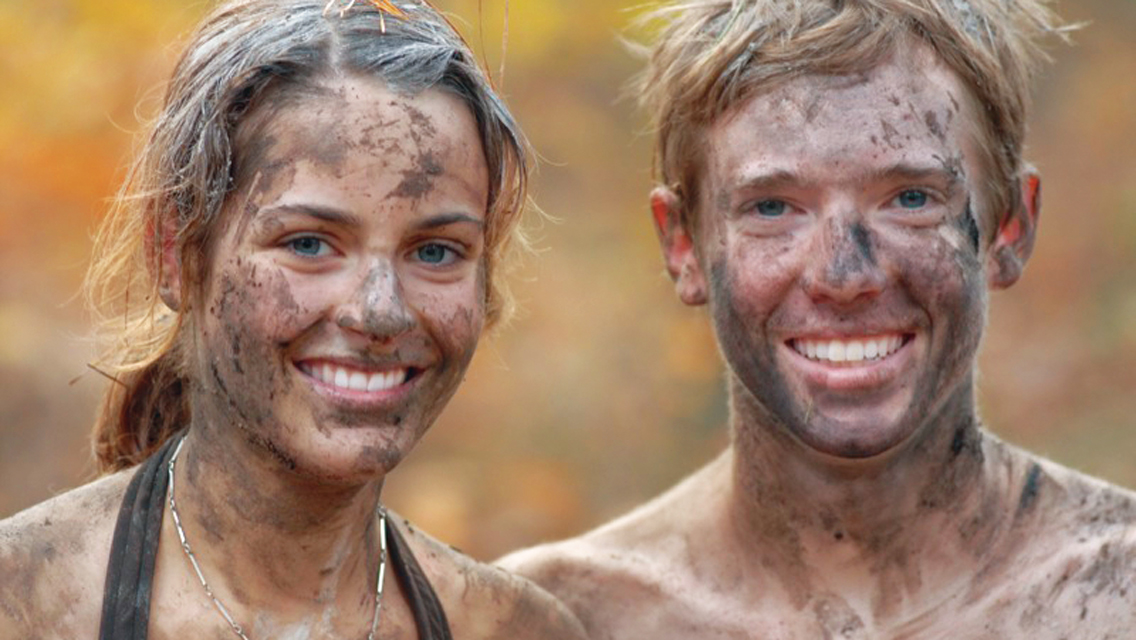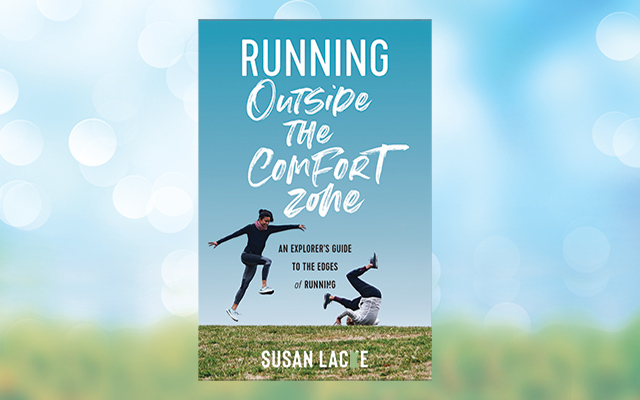Growing up in New Jersey’s Pine Barrens in the late 1950s, Tom Brown Jr. lived a life few of us could imagine. Almost every day, he and his best friend, Rick, immersed themselves in nature: tracking animals, building shelters from twigs and leaves, foraging for food, and generally making themselves comfortable in the wild.
Under the guidance and watchful eye of Rick’s grandfather – an Apache elder named Stalking Wolf – the boys learned how to make fires without matches, how to identify edible and medicinal plants, how to collect drinking water from the morning dew, and how to creep silently through the underbrush and slide unseen over open ground.
But most of all, they learned an intimate respect and reverence for nature. They would sit for hours watching a mouse or a bird or a stream go about its business, observing how the complex and carefully balanced forces of nature interact to create the world as we know it – and where we humans are meant to fit in.
“We learned that everything is interconnected and part of the whole,” Brown writes in his Field Guide to Nature and Survival for Children,, one of more than a dozen books he’s authored. “Our tracks move within the realm of creation, and creation moves within our tracks.”
For the past 30 years, Brown has been championing this nature-centric philosophy and teaching wilderness skills to thousands of ordinary Americans, many of whom come seeking not just hands-on survival know-how, but also deeper connections to the natural world – a world in which very few modern-day folk feel entirely at home.
Surrounded as we are by modern conveniences and luxuries like hot and cold running water, electricity, pre-packaged food, climate-controlled environments and gas-powered vehicles, most of us wouldn’t have a clue how to find our own lunch, much less survive a fortnight in the wild, without these things. And this sense of dependency and vulnerability doesn’t sit entirely well with us.
Neither does our apparent mass amnesia about the ways of the natural world, and that’s something Brown has devoted his life to helping us put right. Through his books and his pioneering Tracker School, Brown invites students of all ages and backgrounds into a realm of traditional wisdom. He reintroduces them to sounds, smells, tastes and textures now nearly forgotten in a manmade world of asphalt and electronics. He reinitiates them into a rhythm of living that has been largely sacrificed to the productivity-driven priorities of contemporary society.
Most students come away from their experiences not just more skilled in the ways of the outdoors, but profoundly changed, convinced of the fundamental value of forging a conscious, constructive relationship with the natural world.
While the modern-day relevancy of so-called primitive skills (how to build a shelter, how to find water, how to make a fire, how to harvest wild food) may seem questionable, a growing number of us seem intrigued by the idea of learning them. For some, the interest may spring directly from concerns about a state of impending emergency or post-apocalyptic meltdown. But for many more, it springs from a desire to correct what we’ve come to feel as an uncomfortable estrangement from the land we call home. A sense that we should know more than we do.
In Brown’s words, most of us have effectively become “aliens on our own planet” – incapable of surviving, much less thriving, in a harmonious relationship with the terrestrial elements from which we sprang.
“Going into nature is really going home,” Brown writes. “We are meant to be living close to the earth, not as a destructive, conquering force, but as an integral part of it.”
Feeling the Vibe
Brown’s message and method have attracted plenty of attention over the years, but have recently begun to resonate in the larger culture with increased urgency.
Part of this urgency may very well stem from an emerging awareness that our current lifestyles are woefully dependent on an endangered fossil-fuel economy. And in times of doubt, perhaps at an instinctive level, many of us would like to have some “just-in-case” skills to fall back on.
But if that’s the “stick” argument for wilderness skills, there are many equally appealing “carrots” that have even greater appeal. Like the fact that being outdoors and learning basic survival skills just plain feels good. And the process of learning them delivers a deep satisfaction that cubicle- and recliner-bound activities simply can’t deliver.
Meanwhile, getting closer to the idea of wilderness immersion is enough for some. Armchair enthusiasts are devouring a number of current wilderness-oriented TV offerings, from CBS’s Survivor, now in its 14th season, to the Discovery Channel’s new series Man vs. Wild, which features British-born adventurer Bear Grylls making his way out of tight pinches using outdoor ingenuity and all kinds of primitive survival techniques. Also popular is The History Channel’s Digging for the Truth, in which explorer Josh Bernstein travels the world investigating archeological mysteries. (For more on Bernstein, see “A Walk on the Wild Side“.)
When he’s not busy filming, Bernstein has a hardcore day job: He runs the Boulder Outdoor Survival School (BOSS), an experiential learning center where a team of approximately 35 instructors offers a wide variety of field, skills and explorer courses in anywhere from seven-day to 28-day formats. Their students range widely – from people in their late teens to early 70s.
Enrollment at both BOSS (founded in 1968) and at Brown’s Tracker School (founded in 1978) remains strong and steady. Nearly two-thirds of students who attend the required first-time course at the Tracker School return for a second class. And in recent years, a number of new schools have opened across the continent, including the Aboriginal Living Skills School, LLC, in Prescott, Ariz., and the Jack Mountain Bushcraft and Guide Service in Wolfeboro Falls, N.H.
Lessons of the Wild
Wilderness schools vary in philosophy, approach and style. Some blend modern technology with “primitive” skills, while others eschew gear in favor of a pure wilderness ethic. Some hold classes in mountain regions, deserts and deep woods, while others conduct workshops in cities such as Los Angeles and Cleveland, teaching urban scouting and survival. Some are geared toward professionals who will be working in extreme conditions – such as the Nunavik Arctic Survival Training Center, which trains researchers bound for Arctic climates – and others are geared toward anyone interested in honing their wilderness savvy.
Both BOSS and Brown’s Tracker School connect students more intimately with nature, but have little else in common. BOSS courses are taught in the field – often in Utah’s harshly beautiful canyon country – with a learn-as-you-go approach. Instructors emphasize the importance of self-reliance and perseverance. Watches, flashlights, tents, stoves, sleeping bags and backpacks are forbidden in the field, and BOSS participants head into the desert with little more than a blanket, poncho and knife. In small groups, participants must gather their own water, forage for edible plants, learn to stay warm with minimal gear, and create shelter, fire and stone tools.
The Tracker School teaches survival skills as part of a broader philosophical approach to nature. This approach hinges on several core ideas, including the notions that ancient traditions can and should be melded with modern traditions; that people (and nature) benefit by learning to “live more closely to the whole,” as the school’s business manager, Karl Direske, puts it; and that survival isn’t so much about the skills you know as it is the mindset with which you approach it.
“There are skills and then there are skills,” says Direske. “Even though we are a wilderness survival school, learning survival skills is a relatively small part [of the experience].”
An estimated 30,000 students have taken Brown’s weeklong Standard class, which uses a lecture-and-field-time format to cover basic skills such as fire making and shelter building. But the school places much more emphasis on the art of tracking and awareness, observation, and attention – skills for which Tom Brown has become both fabled and famous.
“Tom can look at your footprint and tell you how much you weigh and the last time you ate,” says Direske. “He can tell you more about you than you know yourself.”
Call of the Wild
So what draws an otherwise contemporary individual to the realms of primitive living? Michael Denisoff received his call in a thoroughly modern moment: while watching MTV.
“It’s a silly story,” says the Redondo Beach, Calif., management consultant. “It was the mid-’90s and I was living in Raleigh, N.C., at the time, and I had a migraine. So I went home from work early and was watching Road Rules [an MTV reality show]. The kids on the show were roughing it through southern Utah for a couple days with Josh [Bernstein] – and I knew right away that I just really needed to do that, too.”
Denisoff, who enjoyed spending time in nature as a child growing up in rural New York, lost touch with the wilderness when he became a manager in the 1990s. Inspired by the MTV show, he decided to return to the great outdoors and bought himself a weeklong adventure with BOSS in 1996. It was love at first hike.
“The experience changes you,” he says. “It’s so raw – you’re not looking at nature through a car window. You develop a greater appreciation for life being bigger than you think it is. As my mom often says, ‘You should always be able to talk to God – but in some places it’s easier than others.'”
Immersed in the natural world, students and teachers alike often say they feel connected to something bigger, transcendent, sacred – a connection that can offer a new and transformative perspective on their place in the world.
“Our courses aren’t spiritual,” says BOSS field director Jeff Sanders. “But something special happens out there that we can’t control. I don’t know exactly why, but that’s the magic of nature: It allows you to look inside yourself and to see someone you didn’t know was there.”
Some students discover a newfound sense of freedom and inner peace by learning how to survive, even thrive, in unfamiliar terrain with much less equipment than they think they need, Brown says.
Others feel transformed and energized by learning primitive survival skills – like making fire with a bow drill, making a knife from stone, or making cordage from tree bark – as a way of tapping into ancestral traditions.
“Somewhere along their bloodlines – for some more recently than others – everyone’s ancestors regularly used these skills,” says 21-year-old Dan Droughton, who in 2006 took a nine-week course through Ancient Pathways, a Flagstaff, Ariz.–based survival school. “It’s amazing how natural and joyful using some of these skills feel,” he says. “It is an intense pleasure to allow your body and mind to exert themselves in the skills they were designed to practice.”
Survival skills aside, though, just spending time in nature can be transformative – whether you’re on your block or deep in canyon country. Studies have shown that getting outdoors can lower blood pressure, relieve stress, strengthen your immune system and even help you sleep more soundly. For more on nature’s health benefits, see “Healing With Nature” and “Nature Quest“.
“When you go on the trail, there is a lot of anxiety at first,” says Denisoff. “Your brain keeps running for a while, but then all of a sudden you are forced to be in the moment. You can almost see people’s brains emptying as they come into the present. Your brain has had time to decompress. Nature moves that along.”
It’s a little like returning to childhood, says Brown. “What I try to foster is that childlike wonder, that sense of adventure that can’t be found in an amusement park or in a bar.” But perhaps even more than returning us to our childhood openness, living in harmony with nature helps us get reacquainted with our own most essential identity.
“Out there, you realize how very little you need to be happy in life. It’s amazing,” says Denisoff, who now lives in the Los Angeles area and who heads out on his fifth BOSS trip this summer.
It seems that by immersing our attention in the wilderness, we rediscover the elements of wilderness in ourselves. After all, notes Sanders, at some primal level, the wilderness is a basic part of who we are. “When we go out into nature,” he says, “we allow ourselves to be part of what we’ve always been a part of.”
Wilderness Survival Classes and Schools
Want to give wilderness survival school a try? Here are some options for you to explore:
Aboriginal Living Skills School, LLC
Prescott, Ariz.
www.alssadventures.com
Session length: 1 to 9 days
Class size: 8 to 12
Age range: teenagers to seniors
Ancient Pathways
Flagstaff, Ariz.
www.apathways.com
Session length: 1 to 35 days (plus a 9-week “Southwest Semester”)
Class size: typically 6 to 8
Age range: 18 and up
Boulder Outdoor Survival School (BOSS)
Boulder, Colo., and Boulder, Utah
www.boss-inc.com
Session length: 7, 14 and 28 days
Class size: small
Age range: minimum age of 18 for field courses, 13 for skills courses (accompanied by adult)
Tom Brown Jr.’s Tracker School
Waretown, N.J.
www.trackerschool.com
Session length: 3, 5 and 7 days
Class size: typically 50 to 100
Age range: 18 and up
Wilderness Arts Institute
Choteau, Mont.
www.wilderness-arts.com
Session length: 2 to 14 days
Class size: small
Age range: 12 to 70-plus, depending on the course (all students under 18 must be accompanied by a guardian)
Within City Limits
You don’t have to attend a wilderness school to increase your awareness and appreciation of the natural world. No matter where you live, you’re probably a walk or bike ride away from all sorts of wild and living things. Here’s how to get closer to them:
- Saunter in the nearest park and see how many bird species you can identify. Bring binoculars and a guide to regional birds.
- Sit on the bank of the nearest river or stream and see what floats by. Identify the trees that line the riverbank, and see if you can figure out what made those tracks in the mud.
- Make a point to identify all the plant life in your yard, even those pesky weeds! Learn which ones are edible.
- Study animal scat to see if you can figure out what’s leaving droppings where, and who is eating what. Olaus J. Murie’s classic Animal Tracks, a Peterson Field Guide, will help.
This article originally appeared as “Wilderness Lessons” in the July/August 2007 issue of Experience Life.




This Post Has 0 Comments